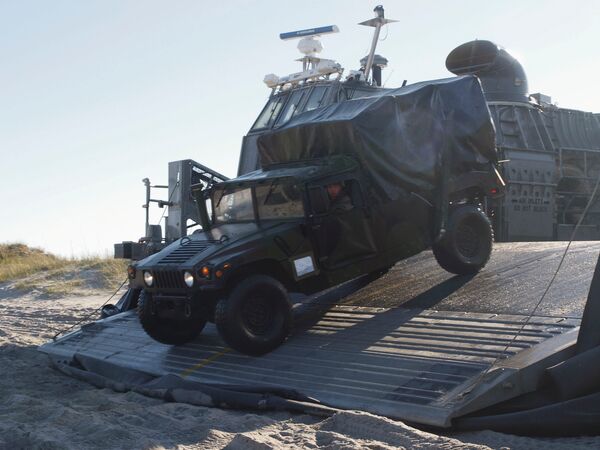
The US Marine Corps is focusing on developing better logistics. (Janes/Michael Fabey)
To lay the foundation for revamped US Marine Corps (USMC) expeditionary operations, USMC leadership has underscored the need to properly support dispersed forces with sufficient logistics.
In much the same way, the US Navy (USN) is developing its own somewhat similarly designed distributed lethality concept that also must provide the logistics support for those far-flung, thinly spread forces.
The USN acknowledges the importance of logistics force and support vessels in its recently released Report to Congress on the Annual Long-Range Plan for Construction of Naval Vessels for Fiscal Year 2024, saying, “These smaller ships are critical enablers of the USMC Force Design [2030] and Distributed Maritime Operations (DMO).”
Speaking at a Brookings Institution event on 23 May, General David Berger, USMC commandant, said, “It's very clear to me that logistics among the warfighting functions is the one that we need to make the most progress on right now. It's not fires, it's not intelligence, it's not command-and-control.”
While the USN and USMC have often worked in lockstep through the decades in integrating their naval forces for effective joint operations – with plans to develop, exercise, and hone mated missions – the two find themselves at odds over some of the requirements for key platforms.
Even as both services continue to make progress on overhauling their operational concepts, both face issues – separate and combined.
The most public – and the most controversial and arguably most important – is the debate over the design and capabilities for the new amphibious ship the marines have in mind to anchor the logistical component for Gen Berger's Force Design 2030 (FD2030) plans for the revamped force.
Size matters
Looking to read the full article?
Gain unlimited access to Janes news and more...







